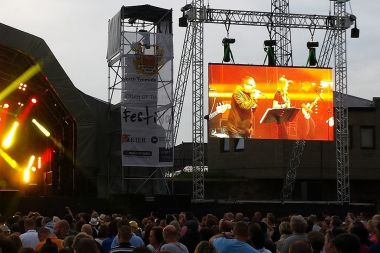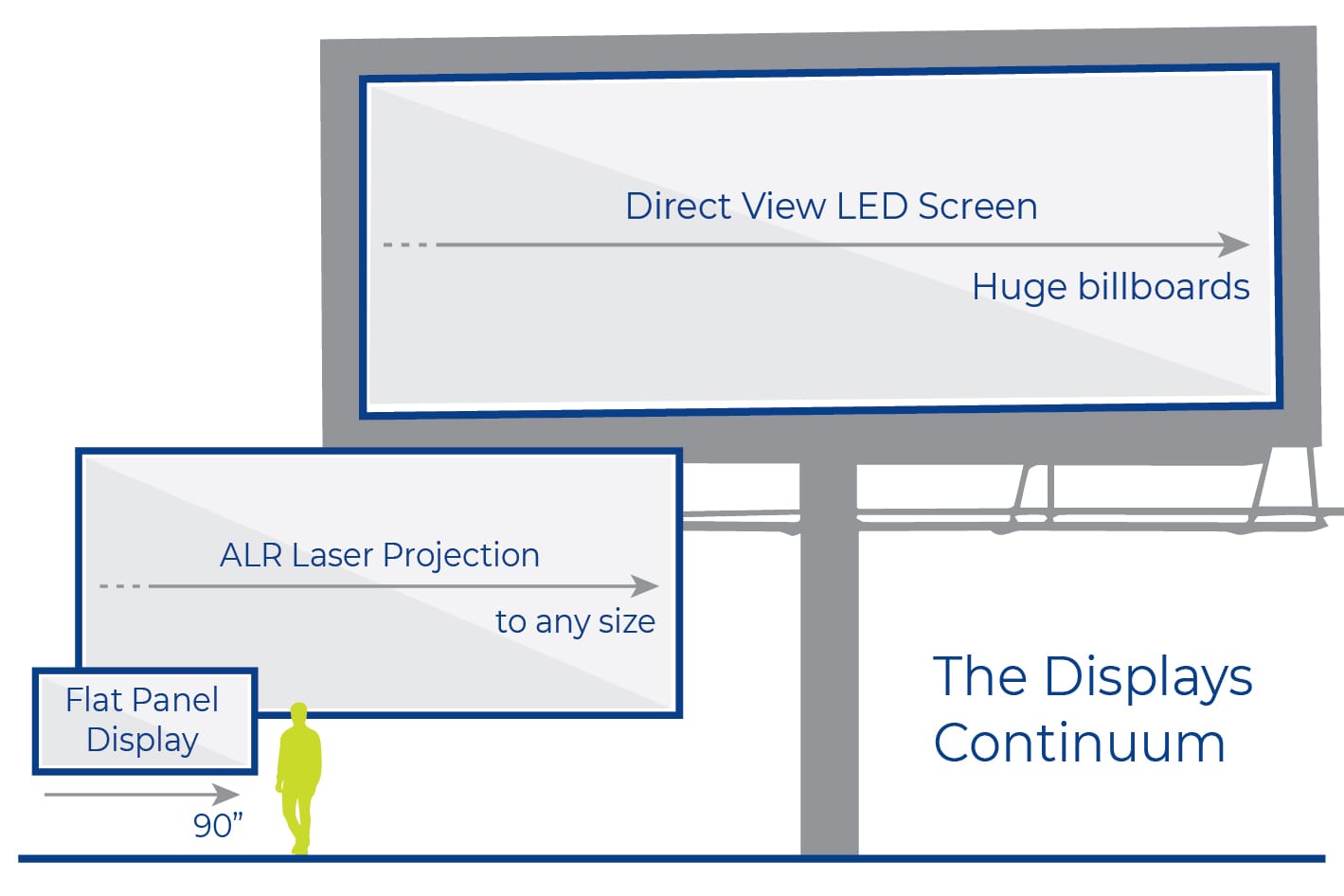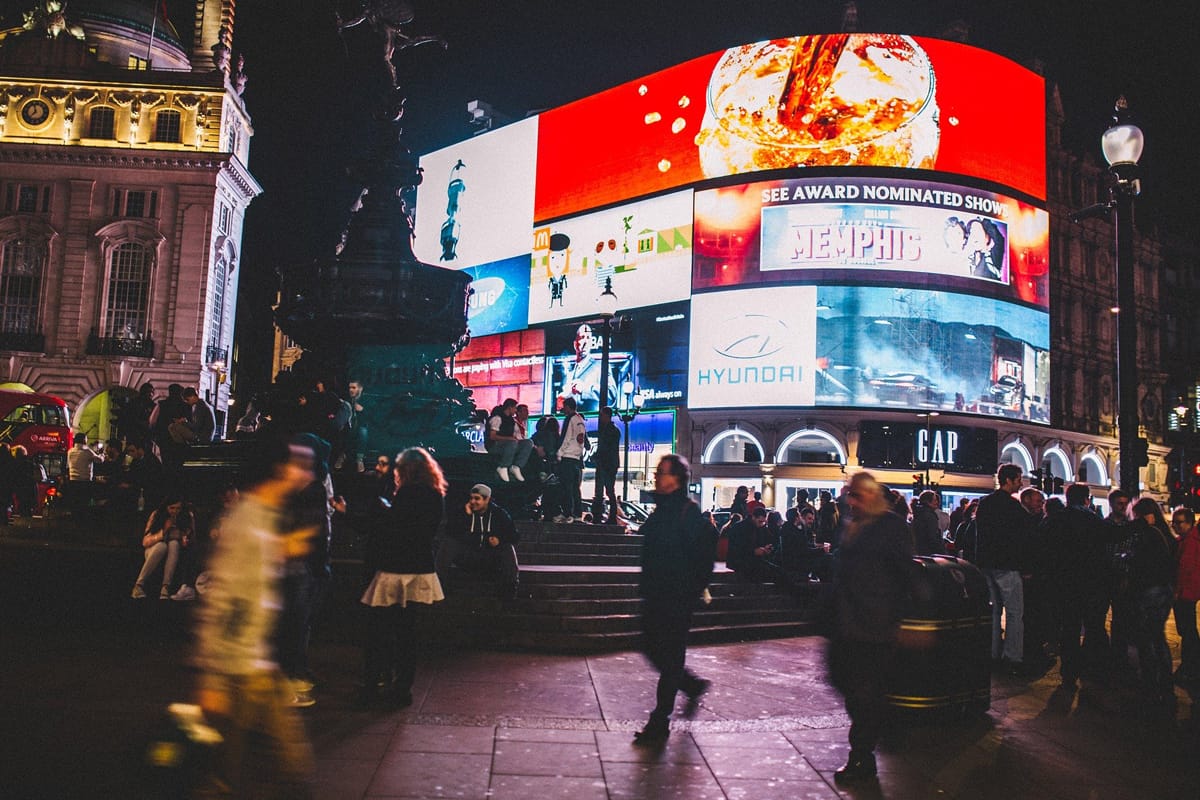Direct View LED Screens: Revolutionising Large-Scale Displays
These are displays made up of individual forward-facing LEDs, each LED comprising a single pixel within the overall display. To explore more high-quality display solutions, please visit our homepage to explore our full range of offerings.

The Impact of Direct View LED Screens
Direct view LED displays have revolutionised the super-large display world, replacing billboards and giant signs with their eye-catching impact. They’ve made the futureworld vision of Blade Runner into an everyday reality (set in 2019, by the way, if you’re not already feeling old!).

Where Do Direct View LED Screens Fit in the Display Spectrum?
Direct view LED screens sit at the top end of the ‘displays continuum’ where there’s an overlapping thread of technologies: from tiny 2” LCD screens on petrol pump handles; to large format LED display-illuminated LCD flat panel displays which reach their expensive peak around the 98” size; then projection (coupled with ALR screens for displays’ purposes) which can go any size (when ambient light is controlled/dark); and then finally to these direct view LED screens. In the UK, the Tottenham Hotspurs’ new stadium in London is a prime example of this technology at its best.
The Challenge of Choosing the Right LED Screen
There is a world of confusion here, with dozens and dozens of competing manufacturers. It’s important to know that product differentiators are primarily driven by the quality grading of the individual LEDs that make up the displays, followed by quality of panel manufacture and mechanicals and then image processing. This creates the sometimes baffling price differences for systems notionally of the same size and resolution.
Get expert advice
We create large displays of exceptional quality and value. We are the only trade-only screens and displays specialists with full CAD, technical expertise and specialist support consultancy. Book a call with one of our expert team and see how we can transform your next AV project.
Understanding Pixel Pitch and Image Size
To calculate image size, multiply the LED ‘pixel pitch’ (size) by the image resolution. Example: an HD display 1.2mm LED pitch has 1920 x 1.2mm LEDs and therefore creates an image of 2.304m width; then 1080 x 1.2mm LEDs creates the 1.296m image height. You can approach this the other way so, for example, a 4m x 2.25m that needs 1920 x 1080 HD pixel resolution will therefore need a pixel resolution close to 2.08mm (4000 ÷ 1080 = 2.08).
Brightness and Viewing Experience
Direct view LED screens’ brightness (up to and over 5,000 nit [candelas per square metre]) are both their strength and weakness. Signage and advertising, for example, can benefit from such punch and impact where dwell and viewing time is brief and viewers can choose to look away.

The Impact of Brightness on Viewing Comfort
Such brightness must be avoided for presentation and teaching — in fact, any situation where viewers need to engage fully with the content. (This is typically the Basic Decision Making viewing category within the PISCR/ISCR and DISCAS standards.) Such applications leave viewers little choice but to stare continuously at the screen.
The critical factor here is to have seen, tested, and confirmed that the proposed product’s image brightness (luminance) can be wound back to the point where it won’t create eye strain — and its colour and image quality rendition is not compromised in the process. It’s all very well for the brochure to claim a direct view LED screen delivers, say, 3000 nit (candela per square metre [cd/m2]) when this would cause severe optical fatigue and what’s actually needed might be less than 300 nit!
See the Projection vs LED comparison article for more information about choosing the right screen for you.


Indoor Direct View LED Screens
Indoor video walls typically require lower brightness compared to outdoor applications, as the viewing distance and lighting conditions are controlled. High-quality contrast and pixel pitch are vital in indoor installations to ensure that the content remains sharp and clear, even in smaller spaces.
Outdoor Direct View LED Screens
For outdoor displays, the brightness must be significantly higher to account for ambient light. These screens are built to endure harsh weather conditions and are designed for high-impact advertising or live-event use. The service and durability of these screens are key factors in outdoor installations, especially in larger formats.
LED Display Series and Video Walls
When considering video walls, understanding the technology behind the series of LED display panels is crucial. The panels are designed to work in tandem, creating a large, cohesive visual experience for the viewer. These are ideal for both indoor and outdoor environments.
Why Choosing the Right Direct View LED Screen Matters
Selecting the appropriate direct view LED screen involves understanding the intended use, from video walls in a corporate environment to outdoor advertising displays. The viewing distance and required brightness levels must be considered for optimal performance.
For more insights, check out our Projection vs LED comparison article for more information about choosing the right screen for you.
Explore by Technology
- Lecture theatres & teaching spaces
- Auditoria Displays
- Training & event rooms
- Reception & communal areas
- Interactivity
- Large Screen Technology
- What is a Direct View LED screen?
- How do I choose the right pixel pitch for my LED screen?
- What are the main differences between indoor and outdoor LED screens?
- Are Direct View LED screens better than projection systems?
- Why do prices vary so much between LED screen systems?
- How bright should a Direct View LED screen be?
What is a Direct View LED screen?
A Direct View LED screen is a display made up of individual LEDs, where each LED acts as a single pixel. These screens offer outstanding brightness, sharpness and scalability, making them ideal for large-scale displays such as video walls, billboards, and event backdrops.
How do I choose the right pixel pitch for my LED screen?
Choosing the correct pixel pitch depends on your required resolution and typical viewing distance. A smaller pitch (e.g. 1.2mm) is suited to close-up viewing, while larger pitches (e.g. 2.5mm+) are better for long-distance viewing. Pixel pitch also affects overall screen size and cost, so expert guidance is recommended.
What are the main differences between indoor and outdoor LED screens?
Indoor LED screens are designed for controlled lighting environments and prioritise fine pixel pitch and contrast. Outdoor LED screens need higher brightness levels (often over 5,000 nits) to combat sunlight and are built to withstand weather conditions, making them suitable for public advertising or event staging.
Are Direct View LED screens better than projection systems?
Direct View LED screens excel in brightness and visual impact, particularly in ambient light or large open spaces. However, projection may offer better value for ultra-large displays in darker settings. The right choice depends on environment, viewing distance, and purpose. See our Projection vs LED comparison for more.
Why do prices vary so much between LED screen systems?
The cost of a Direct View LED system is influenced by the grade of LEDs used, build quality, image processing capabilities, and manufacturer reliability. Two displays of the same size and resolution can differ significantly in performance and durability — it's important to compare more than just the specs.
How bright should a Direct View LED screen be?
For outdoor use, brightness levels of 3,000–5,000 nits are typical. For indoor environments like boardrooms or lecture theatres, brightness should be adjustable and often kept below 300 nits to avoid eye strain. Always check if the screen can dim effectively without degrading image quality.
